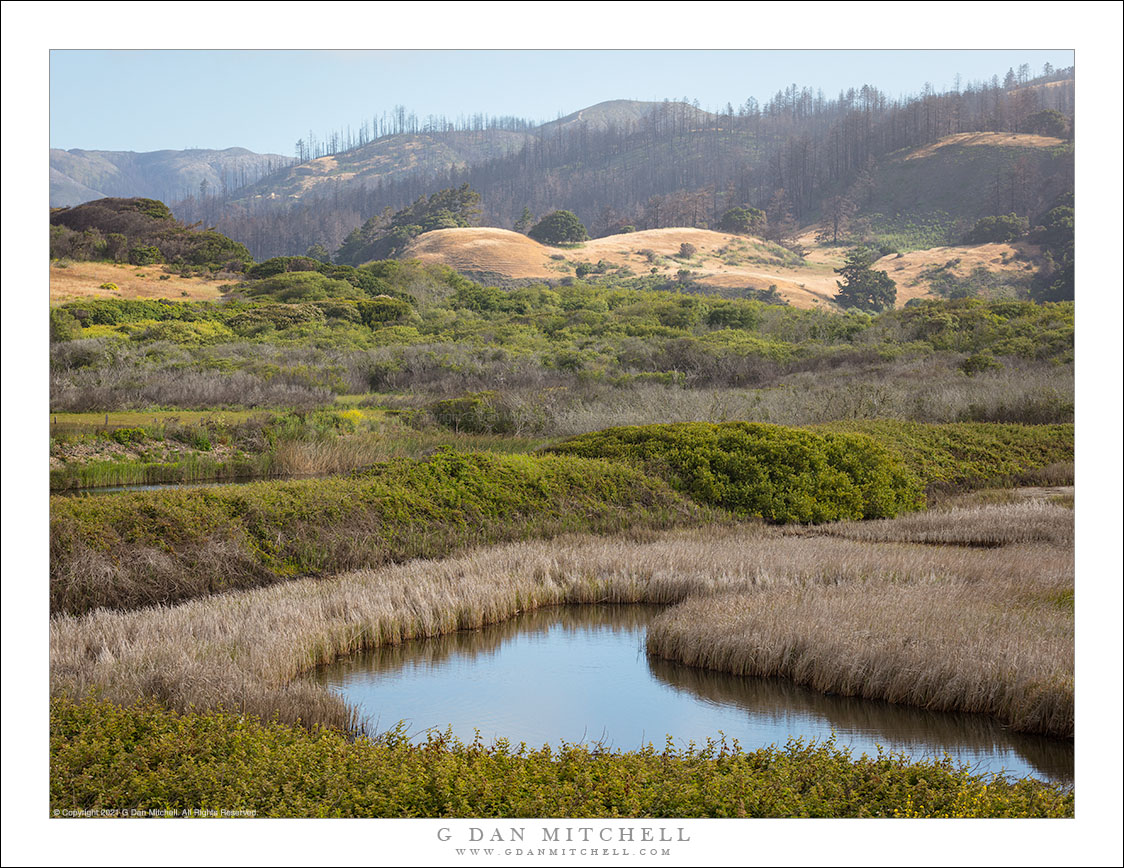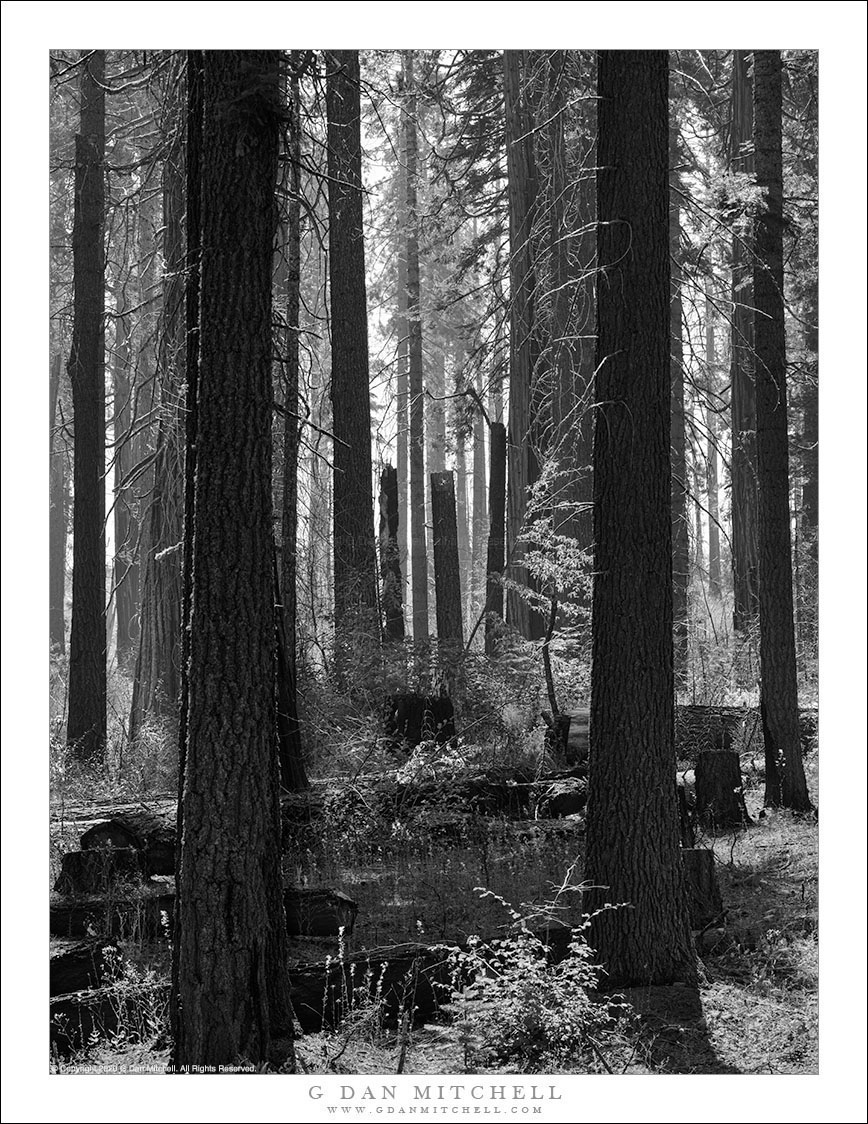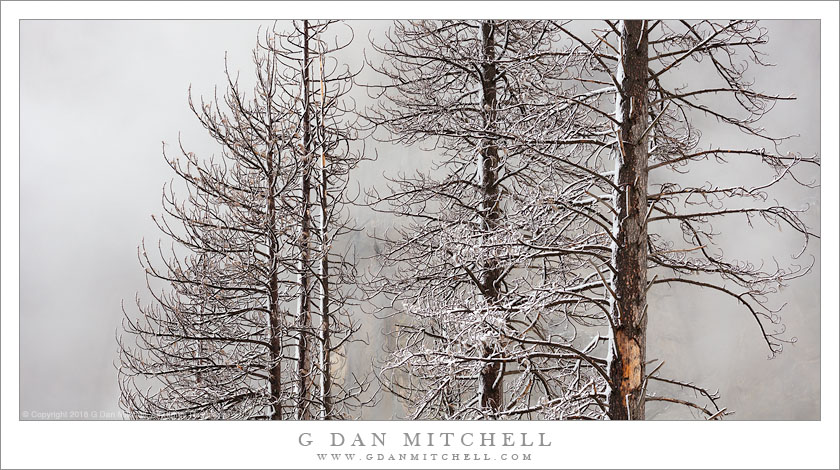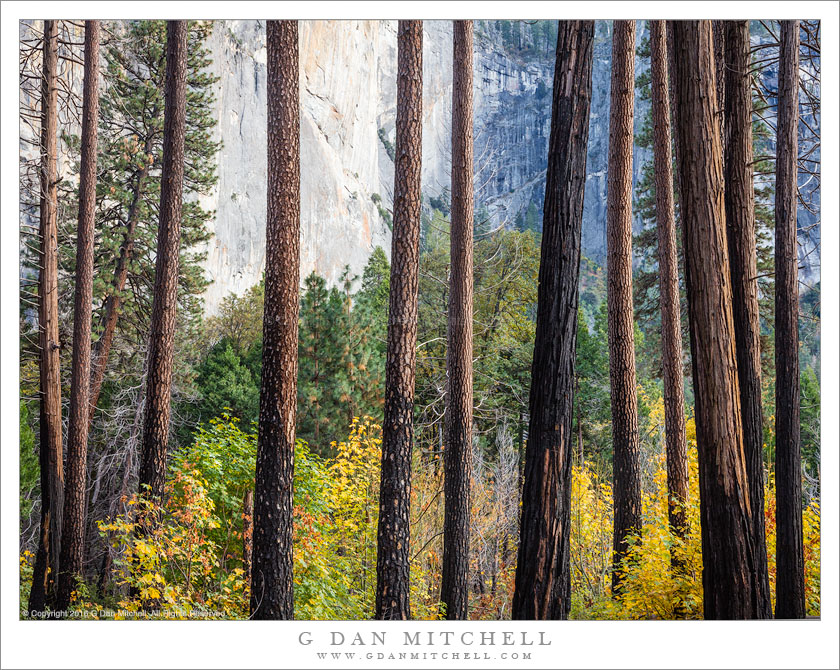
Coastal Lagoon, Burned Hills. © Copyright 2021 G Dan Mitchell – all rights reserved.
A coastal lagoon between Santa Cruz and San Francisco, backed by distant burned hills.
This is a photograph that tells a story, one that may not be immediately apparent. But once you see it you may connect it to a larger story affecting California and the west right now, a story that is beginning to affect the entire planet it concerning ways. It is a photograph of a small lagoon along the Pacific Coast Highway just north of Santa Cruz, California. This is a place I have visited for years — decades, actually — and it is usually a lovely, bucolic landscape. I made the photograph in spring, and even during this very dry year the vegetation is thick and lush and the lagoon remains wet, supporting plant and animal life.
But take a closer look at the ridge in the distance. It belongs to what we loosely refer to as the “Santa Cruz Mountains,” the range lying between the South San Francisco Bay and the Pacific Ocean. The top of the ridge is covered with… the black remnants of a forest that was destroyed in last year’s tremendous lightning-causes wildfires. In places near this location the fire burned almost all the way to the ocean. Fires have always been part of the California environment, but what has happened in the past few years is unsustainable. Due to drought and high temperatures linked to human caused global climate change, the state is incredibly dry and any fire, even the sort that would have been quickly extinguished in the past, can take off and quickly get out of control.
G Dan Mitchell is a California photographer and visual opportunist. His book, “California’s Fall Color: A Photographer’s Guide to Autumn in the Sierra” is available from Heyday Books, Amazon, and directly from G Dan Mitchell.
Blog | About | Flickr | Facebook | Email
Links to Articles, Sales and Licensing, my Sierra Nevada Fall Color book, Contact Information.
Scroll down to leave a comment or question.
All media © Copyright G Dan Mitchell and others as indicated. Any use requires advance permission from G Dan Mitchell.





